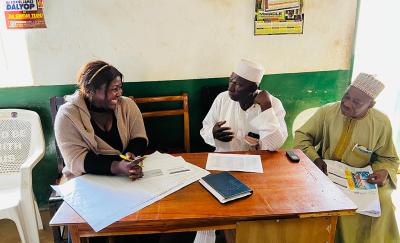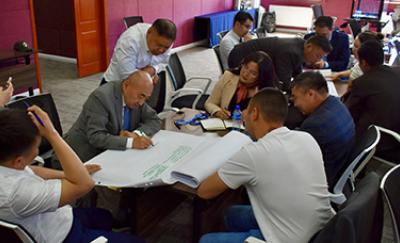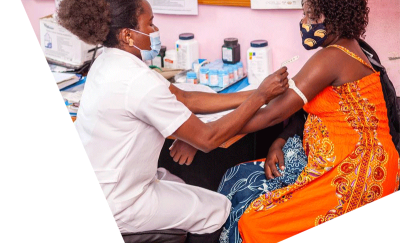Hurricane Katrina’s Tech Lessons for the Current Crisis


Hurricane Ida made landfall in Louisiana on August 29th, 2021, on the 16th anniversary of Hurricane Katrina’s landfall.
After Katrina, nearly 850,000 people were rendered at least temporarily homeless, and more than 1,200 shelters were established across 27 U.S. states to serve them. In 2006, I conducted case study research on the technology processes at one such shelter in Shreveport, Louisiana. Lessons learned there may help us understand where to focus our technology response to Ida and other disasters, which are becoming more frequent as the effects of climate change increase.
Over four weeks, the shelter staff in Shreveport went from using a paper form developed by the Red Cross in 1979 to data entry in Excel to a quickly built web-based registration system and finally to implementation of pre-existing software as a service tool. While this may seem inefficient, it was highly adaptive to evolving needs. The shelter population changed from a high volume of largely self-sufficient residents to a lower volume of people with more difficult problems. The technology moved in tandem from supporting immediate response and crisis management to one that supports long-term recovery and the full breadth of human services.
Adaptablity is critical since each natural disaster is different. Louisiana was better prepared for Ida than for Katrina: stronger levees held in New Orleans, hard-hit Grand Isle was evacuated safely, and everything from generators to food and water to personnel were prepositioned. But Louisiana also had to contend with a spike in COVID-19 cases, making shelters potental superspreader sites.
Yet some components of the disaster dynamic remain the same, so the Katrina model of technology transformation has relevance.
Response Phases
- Phase 1: The initial need was registration to determine how many people were in the shelter. The main technology challenge of this phase was simply getting the shelter wired, designing the intake tool, and responding to external requests for data. While the Red Cross form from 1979 did not do the job, a simple spreadsheet was sufficient and efficient.
- Phase 2: After the most self-sufficient group left, most of the shelter population still had ample social networks who could help them. So a new system was developed to search for family online. Search tasks were crowdsourced to friends and family of shelter volunteers. This was in 2005, when Facebook was only a year-and-a-half old, and Twitter had yet to be launched. At the time, this socially networked, crowd-sourced approach was quite innovative.
- Phase 3: Those that remained in “Phase 3” were those who needed a higher level of social supports beyond their own personal networks The need required at this point was “information and referral” to various human service providers offering services such as housing, counseling, health and mental services, food, and cash assistance. There wasn’t a single system that these providers used to coordinate services. Rather, the shelter managers set up a room that became a “mall” of services at various tables. Each provider had a computer that could, if needed, link to the organization’s data systems, but there was no coordination.
- Phase 4: After three weeks, pressure increased to close the temporary evacuation shelter. At the same time, those who remained had the greatest long-term need. These two seemingly opposing forces converged toward a greater emphasis on proactive case management. To support this, the shelter implemented a full-fledged case management tool--the same one implemented by programs that help people experiencing homelessness in the region. This makes sense since the functions of the shelter were now quite close to what you would find in a homelessness program.


What We Can Do Today
Would it have been better to implement the case management tool right away? I think not. It would not have been the best tool in the early phase of registering thousands of people since the comprehensive intake to support case management often requires more expertise, training, configuration, and data entry. The shelter had no real need to know more about the individuals or connect them to other services, and the chaotic infrastructure and volunteer staffing couldn’t support it.
This was proved when Hurriance Rita struck just a few days after implementation of the case management system. To make room for new evacuees, the computers were dismantled and replaced with cots. The technical experts were asked to leave town to make room for as many evacuees as possible. Once the hurricane hit, electricity and connectivity were lost, and data staff were repurposed to sandbagging. In essence, a low-tech, crisis response mode was naturally reinstituted by the disaster despite the fact that all the technology infrastructure had been in place days before.
As Russell Dynes wrote in his 1970 classic Organized Behavior in Disaster:
“Rather than accepting the usual assertion about the irrational, inefficient behavior in disasters, it is possible … that the end result is more rational and, in time, more efficient since a community has restructured itself to meet a set of problems which its previous structure could not. Disaster planning should be made in the context of these natural processes set off by a disaster event; and it should facilitate these processes, not impose a model of human and technological efficiency which has little relationship to reality.”
That’s why technology advances has only partly improved disaster responses. In the earliest crisis response phase, the main goal is simply knowing how many people are in a shelter. High-tech solutions would be overkill. Then, during the final recovery period, case management is needed, which requires a personal, human response.


However, recent advances could suit the middle phases of the response, which need crowd sourcing, integrating data across systems, and restoring social ties and safety nets. In the Katrina shelter, the technology and people for facilitating family search and crowdsourcing was built from scratch. Today social media can crowdsource mobilization up front, and people can gather their own information and referrals much more easily. Similarly, advances in data integration standards could accelerate coordination efforts of services and data. The technology network—like personal and community networks--are neither fully coordinated nor complete chaos and thus well suited for the environment in the middle phases. This is where well-meaning technologists should focus their efforts.
Read More on Climate Change

Pathways to UHC: Nigeria’s State and Local Approaches to Financing Integrated HIV Services and Primary Health Care
Nigeria’s state and local government-driven approaches to integrated primary health care are transforming financial protection and access for vulnerable populations, setting a replicable model for sustainable universal health coverage.

Engaging Men in Gender-Based Violence Prevention
To observe the 16 Days of Activism Against GBV, Abt is convening a webinar on engaging men in GBV prevention.

The Next Phase of Financing for Resilience
In our webinar, explore innovative financial strategies to enhance climate resilience and scale finance for sustainable development in emerging markets.

Global Digital Health Forum (GDHF) 2024
Abt Global is sponsoring and presenting at the Global Digital Health Forum (GDHF) 2024.